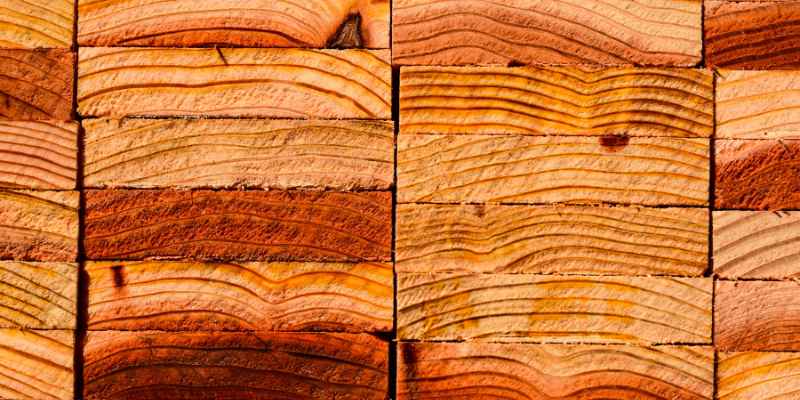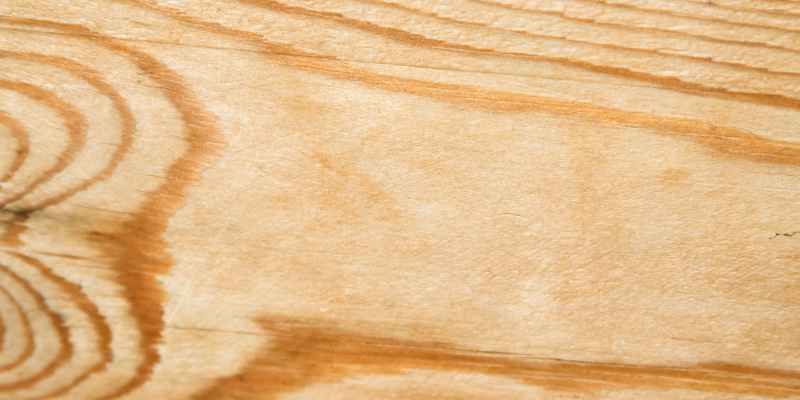Cedar is a softwood tree, not a hardwood. It belongs to the coniferous category of trees that typically have needle-like leaves and bear cones.
Cedar is a type of softwood that belongs to the coniferous category of trees, characterized by needle-like leaves and cone-bearing. Despite its name, cedar is not classified as a hardwood. Instead, it is categorized as a softwood due to its porous nature and relative ease of cutting and shaping.
This wood variety offers many desirable qualities such as its natural resistance to decay and insect pests, making it a popular choice for outdoor structures like fences, decks, and siding. Additionally, cedar’s distinct aroma and attractive grain patterns contribute to its versatility in furniture making and decorative applications. Its lightweight and easy workability further enhance its appeal in various construction and woodworking projects.
The Difference Between Hardwood And Softwood
Understanding the difference between hardwood and softwood is crucial when it comes to choosing the right wood for your projects. Contrary to what their names might suggest, the classification of hardwood and softwood is not based on how hard or soft the wood is, but rather on the type of trees they come from. Let’s dive deeper and explore the physical properties that distinguish hardwoods from softwoods.
The Classification Of Woods
In order to differentiate between hardwoods and softwoods, it is important to understand their classification. Hardwoods come from deciduous trees, which are trees that lose their leaves annually. These trees have broad leaves and are typically slower growing. In contrast, softwoods come from coniferous trees, which are evergreen and bear cones. These trees have needle-like or scale-like leaves and tend to grow faster. Knowing this distinction can help you identify the type of wood you are working with.
Physical Properties Of Hardwoods
Hardwoods are known for their durability and strength. They have a more complex cellular structure compared to softwoods, which contributes to their dense and sturdy characteristics. Hardwoods are generally denser, heavier, and less prone to scratches or dents. They have a wide range of colors, grains, and textures, making them popular choices for furniture, flooring, and high-quality woodworking projects. Some common hardwood species include oak, mahogany, maple, and walnut.
Here are some key physical properties of hardwood:
- Higher density and weight.
- Strength and durability.
- Complex cellular structure.
- Wide range of colors, grains, and textures.
Physical Properties Of Softwoods
Softwoods, on the other hand, are known for their versatility and availability. They have a simpler cellular structure, consisting mostly of long fibers, which gives them a softer and more flexible nature compared to hardwoods. Softwoods are generally lighter, easier to work with, and more affordable. They are commonly used in construction, outdoor projects, and in the production of paper and cardboard. Popular softwood species include pine, cedar, spruce, and fir.
Here are some key physical properties of softwood:
- Lower density and weight.
- Softer and more flexible nature.
- Simpler cellular structure.
- Widely used in construction and outdoor projects.

Introduction To Cedar
Cedar, a versatile and popular wood choice, falls under the category of softwood. Its natural durability and weather resistance make it suitable for various outdoor applications. Whether you’re considering a cedar deck or fence, this softwood option offers strength and beauty.
Cedar is a popular and versatile wood that is commonly used in various construction and woodworking projects. It is known for its natural beauty, durability, and resistance to rot and insect damage. Understanding the characteristics and uses of cedar can help you determine whether it is the right choice for your next project.
Overview Of Cedar
Cedar is a type of softwood that comes from various species of coniferous trees belonging to the genus Cedrus. Although it is referred to as a softwood, cedar is actually harder than many other softwoods. Its density and durability make it suitable for both indoor and outdoor applications.
There are different types of cedar, including Western Red Cedar, Eastern Red Cedar, and Atlantic White Cedar, each with its unique properties. Western Red Cedar, for example, is reddish-brown in color, lightweight, and resistant to decay. Eastern Red Cedar, on the other hand, is reddish in color and often used for aromatic cedar chests and closets due to its pleasant fragrance.
One of the main reasons why cedar is highly sought after is its natural resistance to decay and insect damage. The presence of natural oils and resins in the wood acts as a deterrent to fungi and insects, which helps extend its lifespan when used outdoors.
Common Uses Of Cedar
Cedar’s versatility makes it suitable for a wide range of applications. Its stability, resistance to rot, and beautiful grain patterns make it a popular choice for exterior siding, decking, and fencing. The natural oils in cedar provide a level of water resistance, making it an ideal choice for outdoor furniture and structures.
Due to its aromatic properties, cedar is often used in the production of indoor furniture, such as chests, cabinets, and closets. The pleasant fragrance not only adds to the aesthetics but also helps repel moths and other insects that can damage items stored inside.
In addition, cedar is a preferred choice for interior paneling and trim work. Its warm reddish-brown tone adds a touch of elegance to any space. Cedar is also commonly used for crafting outdoor structures like gazebos, pergolas, and garden sheds.
Understanding Cedar’s Classification
Cedar is a fascinating wood species that belongs to the family Cupressaceae. Within this family, there are several different types of cedar, each with its unique characteristics. The botanical classification of cedar is based on its natural characteristics, growth patterns, and genetic makeup.
When we talk about cedar, we usually refer to two primary types: Eastern Red Cedar and Western Red Cedar. Both of these types are considered true cedars, scientifically known as Cedrus. These cedars are known for their durability, insect resistance, and distinct aroma.
Cedar’s Place In The Hardwood-softwood Spectrum
Cedar’s classification as either a hardwood or softwood is often a point of confusion. Unlike other wood species that can be easily categorized as one or the other, cedar falls in a unique position on the hardwood-softwood spectrum.
Typically, hardwoods are dense and come from deciduous trees, while softwoods come from evergreen trees and are less dense. However, cedar defies this categorization due to its unique characteristics.
While cedar has many properties commonly associated with softwoods, such as being lightweight and having straight grains, it possesses some characteristics of hardwoods as well. Cedar is known for its exceptional strength, durability, and resistance to decay. These qualities make cedar an ideal choice for outdoor applications, such as decking, fencing, and siding.
Furthermore, cedar’s classification is not solely dependent on its physical properties. It also depends on how the wood is used and perceived in different industries and regions. For example, in North America, cedar is often considered a softwood due to its common use in construction and woodworking. On the other hand, in the British Isles, some species of cedar may be classified and referred to as hardwoods.
In conclusion, while cedar may not neatly fit into the traditional hardwood or softwood classification, its unique properties and versatility make it a sought-after wood species. Whether you are looking for a material for outdoor projects or indoor furniture, cedar’s natural beauty and exceptional properties make it an excellent choice.
Characteristics Of Cedar Wood
Cedar wood is a popular choice for various woodworking projects due to its unique characteristics. Understanding the appearance, strength, durability, workability, and uses of cedar wood will help you make informed decisions when considering this type of wood for your next project.
Appearance And Color Of Cedar
Cedar wood is known for its distinct appearance and natural beauty. It features a straight grain pattern with a fine texture, giving it an elegant and luxurious look. The color of cedar wood can vary, but it commonly ranges from light amber to reddish-brown tones, adding warmth and richness to any space. As cedar ages, it develops a silver-gray patina, which is highly sought after for outdoor applications.
Strength And Durability Of Cedar
Despite being classified as a softwood, cedar wood possesses remarkable strength and durability. Its natural oils act as preservatives, making it resistant to decay, rot, and insect infestation. Additionally, cedar has a low density, which contributes to its lightweight nature without compromising strength. This makes it a reliable choice for both indoor and outdoor applications such as furniture, decking, siding, and fences.
Workability And Uses Of Cedar
Cedar is highly valued for its workability, which means it can be easily shaped, carved, and machined. It has excellent dimensional stability, meaning it resists warping, twisting, and shrinking. This allows for precise and hassle-free construction. Cedar wood is commonly used for a wide range of applications, including siding, roofing, interior decor, outdoor furniture, and even musical instruments.
Here are some notable uses of cedar wood:
- Exterior siding and roofing due to its durability and weather resistance.
- Decking and outdoor furniture due to its natural resistance to decay and insects.
- Indoor furniture, flooring, and paneling for its aesthetic appeal and workability.
- Craftsmanship, such as carvings, sculptures, and decorative items, due to its ease of working.
- As a lining material in closets and storage spaces, known for its pleasant aroma and natural moth-repellent properties.
With its unique characteristics and versatility, cedar wood continues to be a preferred choice among homeowners, craftsmen, and contractors.

Debunking The Cedar Myth
When it comes to wood, there are often misconceptions that can lead to confusion. One such myth revolves around cedar. Many people wonder, is cedar a hardwood or a softwood? In this article, we aim to put this question to rest and shed light on the truth.
Exploring The Misconceptions
It is commonly believed that cedar is a hardwood due to its durability and strength. However, this assumption is incorrect. In reality, cedar belongs to the softwood category. So, why is there such confusion?
One reason behind this misconception is that people often associate hardness with density. While it’s true that generally, hardwoods are denser than softwoods, there are exceptions. Cedar happens to be one of them. Despite being a softwood, it possesses remarkable strength and durability that rival some hardwoods.
Another factor that contributes to this misconception is the appearance of cedar. Its rich and reddish-brown color, along with its natural resistance to rot and insect infestations, makes it resemble hardwood species like mahogany or teak. This visual similarity often leads people to assume that cedar is, in fact, a hardwood.
Clarifying The Mislabeling Of Cedar
In addition to the misconceptions, there is also a problem with the labeling of cedar. Sometimes, cedar products may be incorrectly labeled as hardwood due to this confusion. It’s important to note that this mislabeling doesn’t change the inherent classification of cedar as a softwood.
There are various species of cedar, including Eastern Red Cedar, Western Red Cedar, and Northern White Cedar, all of which fall into the softwood category. These trees belong to the cypress family and are known for their aromatic fragrance and resistance to decay.
Table: Different Cedar Species
| Cedar Species | Common Name | Origin |
|---|---|---|
| Eastern Red Cedar | Aromatic Cedar | Eastern North America |
| Western Red Cedar | Thuja plicata | Northwestern North America |
| Northern White Cedar | Thuja occidentalis | Eastern North America |
In conclusion, despite the misconceptions and occasional mislabeling, cedar is indeed a softwood. However, its exceptional strength, durability, and unique characteristics have often led to the confusion about its classification. Understanding the true nature of cedar can help you make informed decisions when it comes to woodworking projects or buying cedar products.
Conclusion
To sum up, cedar can be classified as a softwood due to its characteristics, such as being lightweight and easier to work with. However, it possesses properties found in both hardwoods and softwoods, making it versatile and suitable for a wide range of applications.
Whether you’re looking to build furniture, siding, or decking, cedar’s durability and natural beauty make it a popular choice among homeowners and professionals alike. Embrace the unique qualities of this remarkable wood and explore the possibilities it offers.


